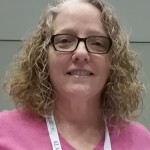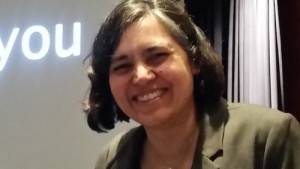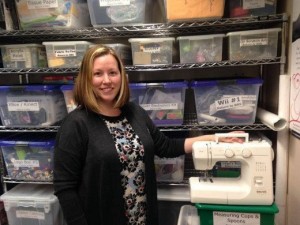
The Public Library Association (PLA) appointed a task force in July 2013 to develop standardized measures of effectiveness for public library programs that go beyond traditional circulation numbers and gate counts. Its goal was to develop a simple survey that libraries could use to collect meaningful outcome measures that would be useful to improve their programs and use in advocacy efforts.
On Sunday morning at the ALA Midwinter Meeting, members of the task force reported on the results of a winter 2014 pilot survey that they tested in their own libraries using programs in six categories: early childhood literacy, encouraging reading, community engagement, economic and workforce development, education and lifelong learning, and digital inclusion.
Greg Simpson at Houston (Tex.) Public Library found that library patrons were eager to participate and that a paper survey worked well for them. He said that volunteers made a positive difference in implementing the survey, especially during toddler storytime programs, which were often chaotic.
Laura Stone of the State Library of Arizona in Phoenix worked with two libraries in primarily rural areas of Navajo County. Holbrook Library selected seven program events with 352 participants but got only 38 survey responses. However, she said they “were very affirming with many open-ended answers.” The results were fewer at Pinetop-Lakeside Public Library, whose library director claimed that his “library users are just surveyed out.”
Richard Kong of Skokie (Ill.) Public Library obtained 77 patron responses in 10 programs using both paper and online surveys, as well as one-on-one interviews in one instance. “Most of the responses,” he said, were “agree” or “strongly agree” in terms of the impact the programs had on patrons, and the “open-ended comments were very useful in measuring program effectiveness.”
 Denise Davis of Sacramento (Calif.) Public Library reported that 13 of the 28 branches participated at least once in a survey program, with the highest level of engagement occurring in early childhood/lifelong learning programs. “Some branches are already incorporating suggestions from the survey into their program planning for spring 2015.”
Denise Davis of Sacramento (Calif.) Public Library reported that 13 of the 28 branches participated at least once in a survey program, with the highest level of engagement occurring in early childhood/lifelong learning programs. “Some branches are already incorporating suggestions from the survey into their program planning for spring 2015.”
Richard Mott, manager for strategic initiatives at the Jacksonville (Fla.) Public Library, also a member of the task force, was in the audience and remarked that he was hoping to use the survey results primarily as an advocacy tool. He said, “To have something in numbers that we can use to demonstrate the value of library programming to stakeholders is particularly valuable.”
Davis added that the Gates Foundation has provided funding to PLA for the next couple of years to further test the survey instrument and to add a dedicated project manager (Emily Plagman, who started at PLA in January). PLA will convene representatives from up to 50 public libraries at a preconference at the 2015 ALA Annual Conference in San Francisco and train them on the use of performance measurement survey methods to help track the effectiveness of their programs over time.


